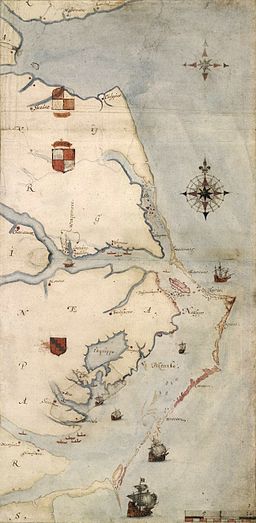One American mystery that has lasted for more than three hundred years is the colony of Roanoke, Virginia. Led by John White, they were sent by Walter Raleigh in 1587. White returned to England that year for supplies and was delayed until 1590 because of the war with Spain. (Remember, there was no overseas communication in that time and travel was slow and difficult.) When he did return, the colonists were gone. The word Croatoan was carved on a post and the letters “CRO” were found on a nearby tree. There was an island nearby known as Croatoan—now called Hatteras—where there were friendly natives.
This video from the Travel Channel gives details to the story along with what might have been a solution, an artifact suggesting that the colonists were attacked and destroyed by natives.
Meanwhile, work happening in North Carolina have yielded results suggesting that some of the colonists ended up there. The First Colony Foundation has been digging for three years above the Albemarle Sound, based on hidden markings found on a map drawn by John White, himself.
So, it appears that the colonists did not move to a single location but may have split up. Why? Were some of them less comfortable with adopting a more native lifestyle? Are there Roanoke descendants amongst us now who don’t even know it?
Clearly the mystery is not fully solved, but we are getting closer. I think that after the delay in White’s return with supplies that those left had to make decisions for their survival. They disagreed on what was best and broke into groups to continue on. At least they did not seem to turn to cannibalism, like appears to have happened in Jamestown.
I like mysteries. It’s fun to wonder…but it’s also good to find answers and I hope that we are closing in on a happy ending to a troubling question in American history.


